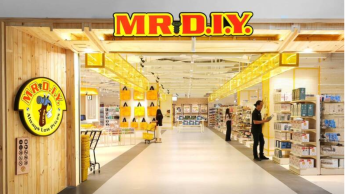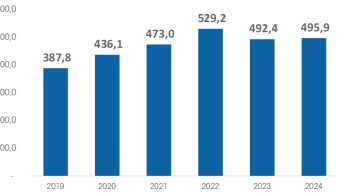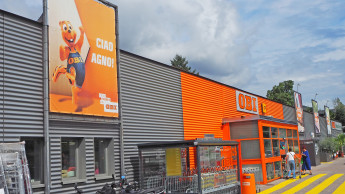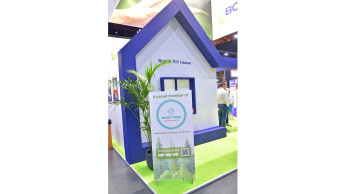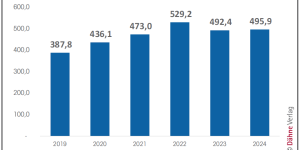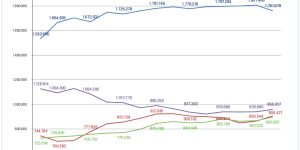Last year the DIY superstores in Germany recorded an increase of three per cent in their sales figures. The controversial discounting campaigns introduced by individual chains contributed to the positive result
The large-scale discounting campaigns of individual DIY retail chains also made their contribution to this development. BHB chief executive John W. Herbert estimates that the sector’s sales would have increased by no more than 0.5 per cent without the controversial pricing campaigns that took place in 2003. He also says that gross profits were down last year.
An examination of all retail sales channels with relevance to the field of DIY shows that not only the DIY stores with a retail area in excess of 1 000 m² could point to positive developments. The smaller stores were also able to put an end to the declining sales of recent years and maintain last year’s level of € 4.27 bn in 2003. Resulting from this trend is a sales volume of € 21.54 bn – an increase of 2.4 per cent over the previous year (2002: € 21.03 bn). The builders’ merchants also expanded their business with private customers by 3.7 per cent, achieving sales of € 7.44 bn (previous year: € 7.17 bn). The sales recorded by independent garden centres came to € 0.73 bn, or the same level as the previous year. Only the timber merchants suffered a sales decline of one per cent for a total of € 3.09 bn (previous year: € 3.12 bn). The total DIY sales accumulated over all the different sales channels came to € 36.58 bn – or around 2.2 per cent more than in 2002 (previous year: € 35.80 bn).
Every single German citizen deposited around € 261 in the tills of the DIY superstores alone in 2003. Right at the top of their shopping lists were products from the gardening category, on which customers spent € 3.97 bn in DIY stores alone last year, but there were also gains of up to nine per cent (unadjusted) for products from the categories of paint, flat-pack furniture and building materials. By contrast, tiles, tools/machinery and electrical products were less in demand. Here sales went down by up to four per cent within the space of a year.
In the year 2003 there was a total of around 4 250 DIY stores in Germany, 3 150 of which had a retail area in excess of 1 000 m². The combined area of these DIY stores amounts to 15.24 mio m² - around four per cent more than the previous year. This means that Germany continues to have up to 20 per cent excess space in comparison with the other countries of Europe, though a glance at the statistics on new openings shows that the trend towards large-format stores actually slowed down in the year 2003. The proportion of new openings with a retail area of 5 000 to 10 000 m² stood at 31 per cent, whereas this size category still accounted for 40.2 per cent of the new openings in the previous year. What is more, the proportion of newly opened DIY outlets with a retail area in excess of 10 000 m² went down by 1.4 per cent to just under 28 per cent. The average retail area increased from 5 053 m² to 5 288 m². The core DIY category accounts for around 53.5 per cent of the overall retail space in German DIY superstores, the garden centre takes up 28.8 per cent of the total, followed by building materials and timber with 17.7 per cent.

 Menü
Menü







